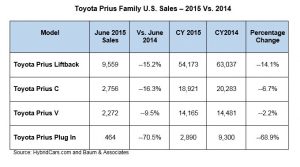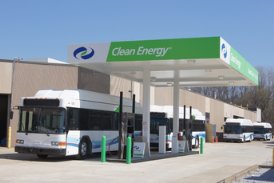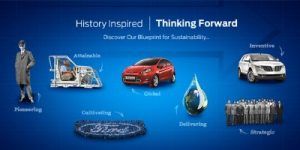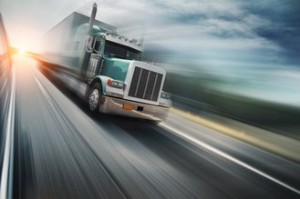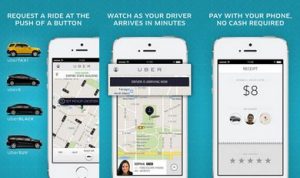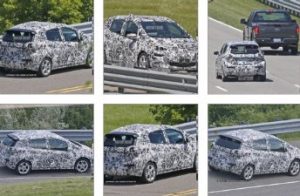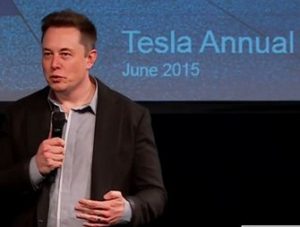by Jon LeSage, editor and publisher, Green Auto Market
Here’s my take on the 10 most significant and interesting occurrences during the past week…….
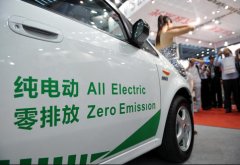 China ramps up EV production: As part of the Chinese government’s “new energy vehicles” mandate to reduce air pollution, automakers are ramping up production of plug-in electric vehicles. According to statistics published by the Ministry of Industry, vehicle manufacturers produced 25,000 new-energy vehicles in June. The growth rate is exceeding what’s being produced in Japan and the U.S. In June,10,500 battery-electric and 6,663 plug-in hybrid passenger cars were manufactured, along with 6,218 battery-electric and 1,645 plug-in hybrid commercial vehicles. That production figure has shot up in recent months, with June seeing about one-third of the total 78,500 plug-in EVs built in China for the first half of 2015. The Chinese government’s data also includes low-speed, neighborhood electric vehicles. The question becomes: Will consumers and fleets buy them? Incentives have been strong in China, but purchasing new energy vehicles has not yet made it to the level the Chinese government and auto industry has hoped for.
China ramps up EV production: As part of the Chinese government’s “new energy vehicles” mandate to reduce air pollution, automakers are ramping up production of plug-in electric vehicles. According to statistics published by the Ministry of Industry, vehicle manufacturers produced 25,000 new-energy vehicles in June. The growth rate is exceeding what’s being produced in Japan and the U.S. In June,10,500 battery-electric and 6,663 plug-in hybrid passenger cars were manufactured, along with 6,218 battery-electric and 1,645 plug-in hybrid commercial vehicles. That production figure has shot up in recent months, with June seeing about one-third of the total 78,500 plug-in EVs built in China for the first half of 2015. The Chinese government’s data also includes low-speed, neighborhood electric vehicles. The question becomes: Will consumers and fleets buy them? Incentives have been strong in China, but purchasing new energy vehicles has not yet made it to the level the Chinese government and auto industry has hoped for.- EV charging had an interesting week with three announcements: One was from Hyundai-Kia’s U.S. technical center, which is teaming up with Mojo Mobility Inc. to develop a high-speed wireless charging system. That is being supported by a $6 million grant from the U.S. Dept. of Energy’s Office of Energy Efficiency and Renewable Energy to complete the project, which will be tested on the 2015 Kia Soul EV. On the open standards side of charging, Greenlots is working with Kia Motors to expand public-access DC fast chargers in California, Texas, Georgia, Oregon, and Washington. This second rollout brings over 30 additional DC charging stations to 21 Soul EV-certified Kia dealers, Greenlots said. And being open sourced, the site host can choose the hardware that’s perfectly suited to his or her application. For those interested in studying pricing on chargers, ChargePoint Home is rolling out a new home charger that will be available later this summer via Amazon for prices ranging from $499 to $749.
- Westport adding propane to F-150s: Westport Innovations announced that it has added a dedicated propane autogas system for the 2016 Ford F-150 powered by the 5.0L V-8 engine. The propane-powered pickup joins the compressed natural gas package as part of the Westport Wing Power System. The company expects both systems to receive certification by the US Environmental Protection Agency and the California Air Resources Board.
- LAcarGUY selling Toyota Mirai: For anyone who’s been to Los Angeles-area green car events like AltCar Expo, you’ve probably met Mike Sullivan, president of the LAcarGUY dealer network in Santa Monica. Sullivan was championing the Fisker Karma and Toyota Prius for several years, and now the dealership has been chosen by Toyota to sell its Mirai hydrogen fuel cell car. Sullivan says he isn’t making any extra efforts to sell that car. His dealership will be one of only eight stores in California chosen by Toyota to sell the hydrogen-powered car with its 312-mile range. Toyota is taking a slow and careful approach, expecting to only sell 3,000 of them nationally by the end of 2017. Having access to dealers like LAcarGUY gives Toyota an opportunity to reach consumers who have interest but little experience with the technology. “These are trailblazers, early-adopter-type customers,” Ed LaRocque, Toyota’s national marketing manager for the Mirai, told Automotive News. “They’re going to come in educated, and the customer experience for this product is very important to the dealers and Toyota. We have to get it right the first time.”
- BorgWarner buying Remy: Tier One automotive supplier BorWarner Inc. is investing nearly a billion dollars to acquire another supplier, Remy International Inc. The $951 million in cash acquisition highlights the increasing importance of the electrification of the powertrain, which has not been a strength for BorgWarner, CEO James Verrier said. Remy is well known in the industry as a maker of electric hybrid motors, turbochargers, and transmission parts. While hybrid sales are down this year, not all of the major automakers and suppliers are pulling out of that market.
- Navy leasing EVs: The U.S. Department of the Navy will be leasing somewhere between 300 to 600 passenger electric vehicles (EVs), with an initial focus on its sedan fleet; these will be used at various Navy and Marine Corps installations within California. The Naval Facilities Engineering Command is holding a forum for discussion with industry partners. The event will be held on July 21 from 2:00 p.m. to 5:00 p.m. at the California Environmental Protection Agency’s headquarters building in Sacramento. Topics to be discussed will include EV leasing, warranties, maintenance, liabilities, charging infrastructure support and other issues.
- Waze offering carpooling mobile app: Waze, a popular driving direction mobile application owned by Google, has launched a new mobile app called RideWith for those interested in carpooling. It’s getting a trial run in Israel near Tel Aviv. RideWith pairs commuters looking for a ride from home to work, or vice versa, with drivers using Waze going in the same direction. This new product brings up the topic of ridesharing, where riders using Uber and Lyft can save money sharing that technology, and that ride, with another passenger.
- EVs and the Grid Summit: 2GreenEnergy Editor Craig Shields attended the EVs and the Grid Summit in Los Angeles last week. The symposium on V2G (vehicle to grid) analyzes what electric vehicle (EV) charging means for a grid within a certain region during peak periods and all that goes with it – such as potentially discharging EVs that have extra charge to spare. Shields says that these questions have been coming up since he first started attending similar events in the 2008-timeframe – but there’s no clear answer yet. He does make a good point on the benefits of having a plug-in hybrid electric vehicle as a backup power source for five-to-six days in the event of a power outage.
- Golf TDI gets high mileage: For those interested in considering an internal combustion engine (ICE) vehicle instead of an alternative powertrain to reduce fuel consumption, you might want to consider the 2015 Volkswagen Golf TDI clean-diesel car. It got 81.17 mpg during a road test across 48 states that set a Guinness World Records achievement for non-hybrid fuel economy. Drivers traveled 8,233.5 miles in 16 days during the trip. The previous record in this test program for a clean diesel was 77.99 mpg, and the hybrid record is 74.34 mpg.
- Eco-benefits of driverless electric taxis: Researchers at Lawrence Berkeley National Lab in California see real environmental benefits coming from driverless cars. If a fleet of autonomous electric taxis were to replace everyone’s gas-powered, personal cars, we could see more than a 90% decrease in greenhouse gas emissions and almost 100% decrease in oil consumption from cars. Given that highly lofty goal won’t be happening anytime soon, what about more realistic transportation alternatives? A fleet of driverless electric vehicles (EVs) about 15% of the size of all private cars could service the same population, if scheduled correctly, estimated Jeff Greenblatt, co-author of the study. The cost savings would be there – even if an EV were to cost $150,000 up front, the study researchers say that an autonomous EV that could drive 24/7, not require a salary, and uses no gasoline would pay for itself in less than five years.
- Plus in this week’s Green Auto Market Extended Edition: Three companies have been added to the list of Clean Transportation Publicly Traded Companies that’s featured monthly in the Extended Edition…… Plug Power: Best known for manufacturing hydrogen fuel-cell forklifts, Plug Power is prominent in the fuel cell market with its strategic alliances. Indoor forklifts was the company’s first viable market with customers such as BMW, Mercedes, WalMart, Kroger, and Whole Foods. Renewable Energy Group: A leading North American producer, REG converts natural fats, oils, and greases into advanced biofuels (primarily biomass-based diesel) and converts diverse feedstocks into renewable chemicals. Vivint Solar: Part of the Vivint holding company best known for home security and smart control panels, Vivint Solar went public in 2014 and is No. 2 in the US solar energy market behind SolarCity. For those interested in subscribing to Extended Edition, read all about it.




